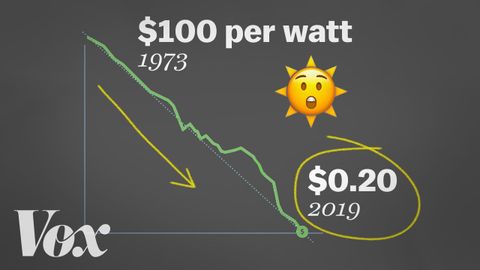你有發現太陽能價格變得很便宜嗎?究竟是為什麼呢? (How solar energy got so cheap)
 沒有此條件下的單字
沒有此條件下的單字US /ˈkruʃəl/
・
UK /'kru:ʃl/
US /fɪˈnɑməˌnɑn, -nən/
・
UK /fə'nɒmɪnən/
- v.t./i.出現;估計;我認為〜;認為
- n.身影;(計算過的)數量;肖像;圖;形狀;人物;名人;人影;數字
US /ˌɡærənˈti/
・
UK /ˌɡærən'ti:/
- v.t.保修;保證;保證;法律保障
- n. (c.)(某產品的)保固;保證某事的如期完成;擔保
